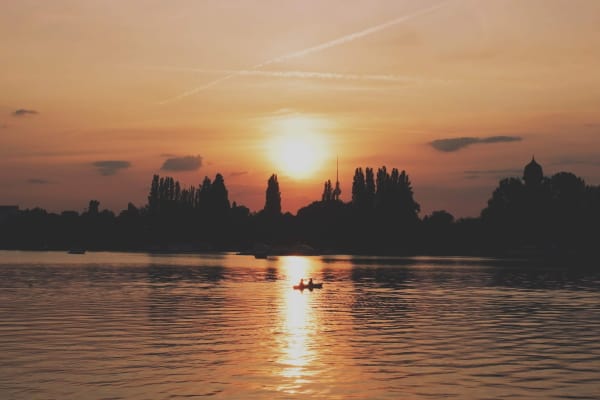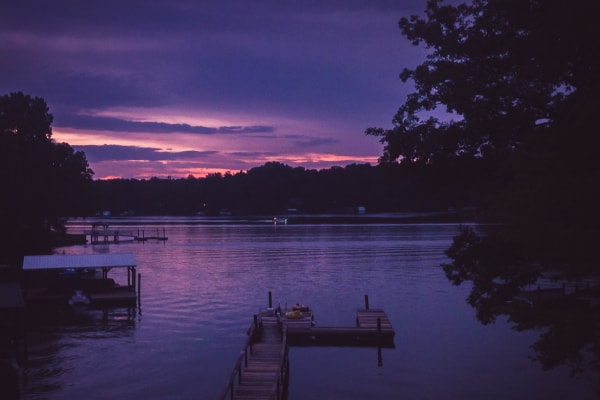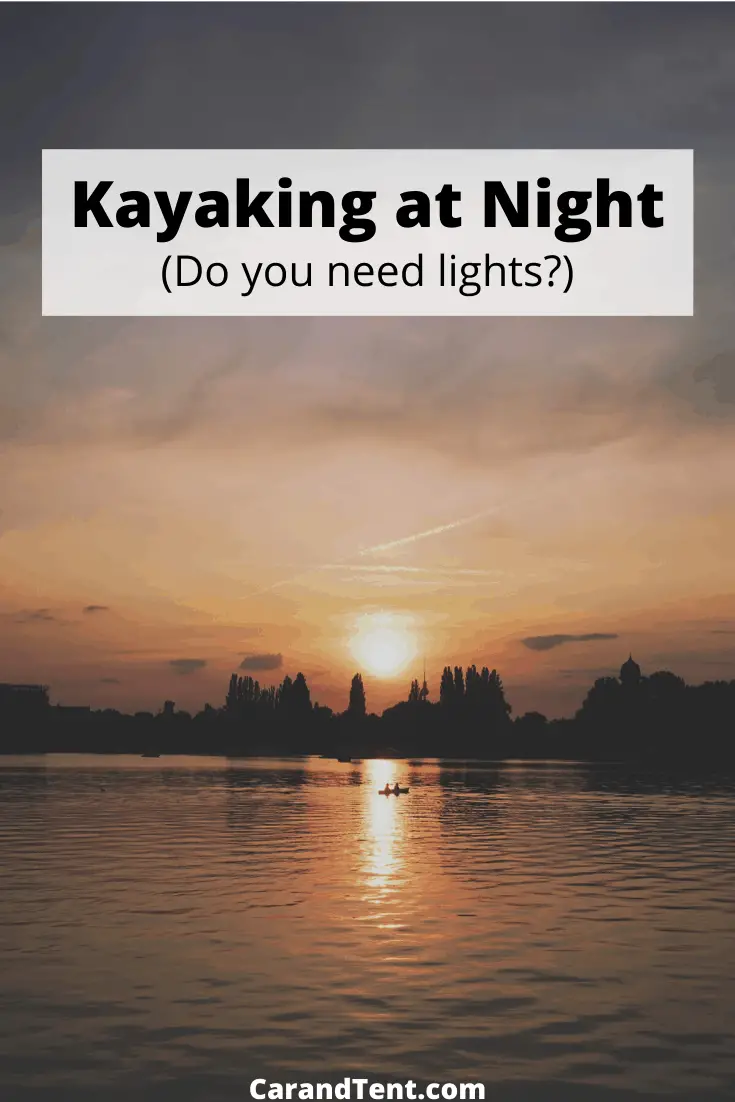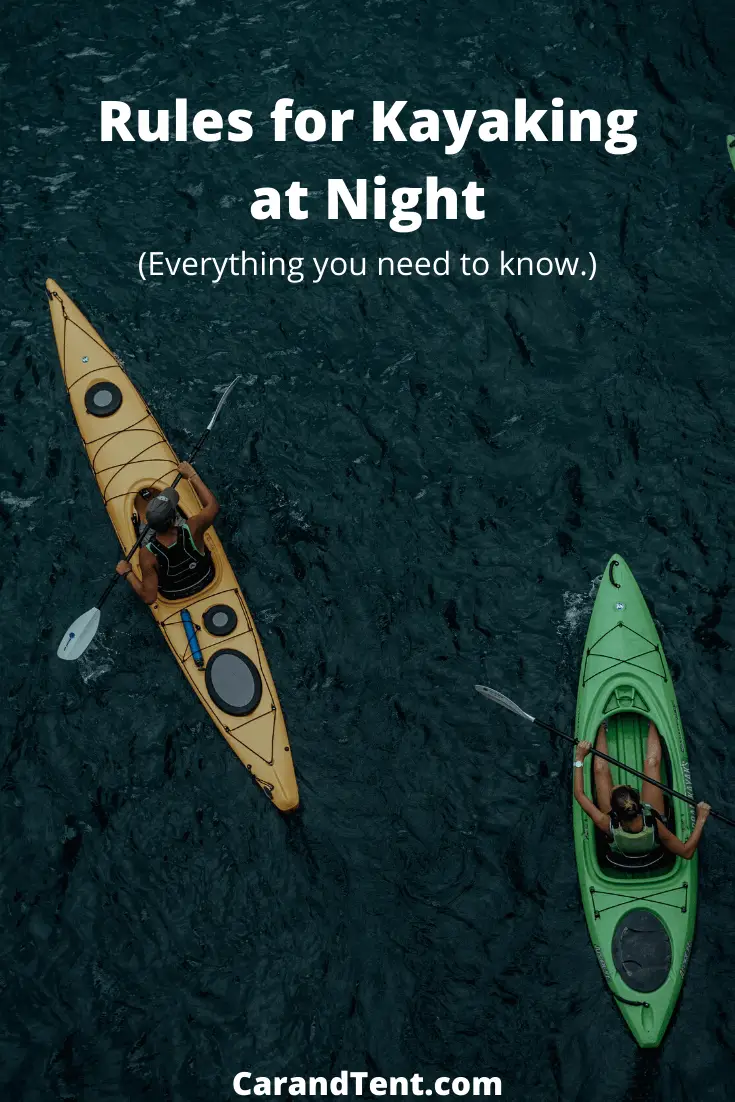
Planning a nighttime kayaking trip? If so, you probably have a few questions you need to answer before you head out.
One thing you’re probably wondering about is, do kayaks need lights at night? The short answer is that you’ll need a light on your kayak at night if you’re kayaking on open waters regulated by the U.S. Coast Guard. You might not need a light on your kayak if you’re on a state or local lake or a pond, but I’d recommend you get one anyway.
Legally, you have to have a light on your kayak when you’re kayaking after dark or in low-visibility conditions in areas regulated by the coast guard. This light usually just needs to be a single white light with 360-degree visibility.
The state you’re kayaking in may also have specific laws regarding kayak lighting as well. These laws usually fall under vessels that are unpowered rather than them being specific nighttime kayaking laws.
The light isn’t just to help you see, it’s to help other boats see you. Having this light on and not having it on can mean the difference between you getting run over by a large boat or it carefully moving around you. The brighter the light you have, the more time the other boat will have to move around you.
Lights to Bring When Kayaking at Night
I’d recommend you get a few lights before you go nighttime kayaking. Here is what I use:
- A portable floodlight.
- A handheld flashlight.
- A detachable 360-degree white light.
- An emergency light.
The Floodlight
A floodlight isn’t absolutely necessary but it makes launching the kayak at night a lot easier. I don’t take it out with me on the kayak. Instead, I use it to help me load up and get the kayak ready for launching and then I put it back in my vehicle.
Why not just use a flashlight? I use a floodlight for loading up instead of a flashlight because it’s a lot brighter and I feel like it dramatically reduces my chances of accidentally stepping on a snake, tripping over a log, or doing something else dangerous.
The Flashlight
I also take along a small waterproof flashlight that floats. This flashlight helps me get from my vehicle to my kayak after I’ve put the floodlight away.
I also use it occasionally to check out the local area. Having this flashlight also provides some redundancy in case my kayak’s light happens to fall off or die out while I’m on the water.
The Detachable Light
It’s best to get a detachable light that meets the requirements of the USGC for canoes and kayaks. Essentially these rules say that you must have a light that can be seen at night up to 2 miles away. They also detail exactly which type of lights you can use and which ones you can’t. You can find these rules by clicking here.
In most cases, you’ll find that states with specific lighting rules will not have any that are more detailed than the ones listed out by the USGC. However, you’ll still want to check with your state first as laws are always being changed and a hefty fine can quickly ruin an otherwise great nighttime kayaking trip.
The Emergency Light
Falling off your kayak in the dark is a little more dangerous than falling off in the light. It’s possible you won’t be able to find your kayak before it floats away from you and you could end up in the water with just your life vest to keep you afloat.
If this happens, you’ll want to have a small and easily accessible light that you can use to help your friends or emergency responders find you. Get an emergency light that straps to your life preserver and you’ll always have a light on you regardless of what happens on your trip. You can unstrap the light and wave it back and forth to let others know that you’re in a state of distress.
What About Flares
Flares may not be a bad idea but it will depend on where you’re kayaking and your familiarity with them. I personally do not have any experience using a flare so I don’t bother with them.
If I ever do get into an emergency situation however, I do have my emergency light that I can wave to call for help. Also, I never go kayaking alone at night so I’ll also have the lights of my fellow kayakers to rely on as well.

More Details on Kayak Lighting
One thought to keep in mind is that more light isn’t always a good thing. Lighting can ruin your night vision and can actually make it more difficult to see where you’re going.
On top of this, it can also draw in bugs and insects. I definitely found this out the hard way when I went out on a rowboat at night for the first time. My thought process was that having a lot of lights would completely illuminate the area and make it easier for me to fish. Instead, it just swarmed my boat with bugs and I eventually found that it was better to rely on the moon and my night vision instead.
Kayak lighting can also hurt the night vision of other kayakers. This is especially true when you’re on a narrow creek with a group of other paddlers. Often-times these creeks won’t have any nighttime lighting rules for unpowered boats so it’s in your interest as well as the interest of your fellow kayakers for you to keep your detachable light turned off or dimmed down to a minimum.
Colors Matter
Your kayak lights need to be white. The reason for this is that other colors have different meanings out on the water.
For example, red and green lights are used by powered boats to tell other boaters what side they’re passing each other on. Blue lights, on the other hand, let others know that you’re on a law enforcement vessel.
Unless your state says otherwise, stick to white lights and you can’t go wrong. If you’re unsure as to whether or not the light qualifies as white light, just read the packaging as it will be listed.
TL;DR
Kayaks need lights at night. Sometimes it’s for legal purposes and other times it’s just for safety purposes. Get a 360-degree white light, a waterproof flashlight that floats, and an emergency flashlight that hooks up to your life vest and you probably won’t go wrong.



